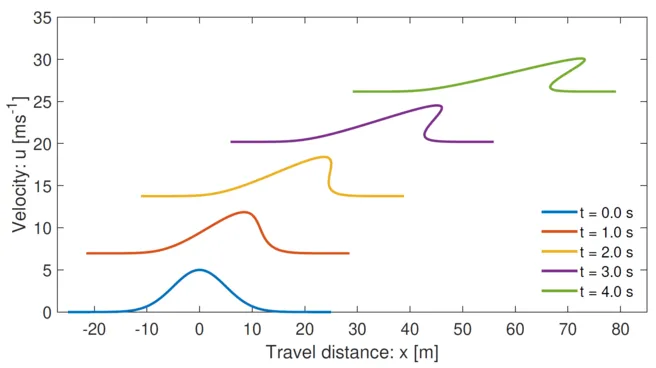Proper knowledge of velocity is required in accurately determining enormous destructive energy of a landslide. We present the first physics-based general analytical landslide velocity model that incorporates internal deformation and external forces: net driving force and viscous resistant. The model stands as a novel non-linear advective-dissipative system where classical Voellmy and inviscid Burgers' equation are specifications. Non-linear advection and external forcing fundamentally regulate the motion which substantially enhances our understanding of a coherently deforming landslide. Since analytical solutions provide fastest, cost-effective and best rigorous answer to the problem, we construct several new/general exact analytical solutions covering wider spectrum of landslide velocity. New solutions bridge existing gap between negligibly and massively deforming landslides. This provides a novel, rapid and consistent method for efficient coupling of different types of mass transports. Mechanism of landslide advection, stretching and approaching to steady-state has been explained. Shifting, up-lifting and stretching of velocity field stem from forcing and advection. Our solution describes fascinating breaking wave and emergence of landslide folding. This happens as the solution simultaneously introduces domain propagation, velocity up-lift and non-linear advection. Domain translation and stretching depends on net driving force and viscous drag controls shock wave generation, wave breaking, folding and velocity. Landslide dynamics are architectured by advection and reigned by system forcing. Analytically obtained velocities are close to observed values, constituting a new foundation of landslide velocity. This provides the practitioners with key information in instantly/accurately estimating impact force that is important in delineating hazard zones and mitigation of landslide hazards.
Pudasaini, S.P., Krautblatter, M. (2021b): The landslide velocity. arXiv:2103.10939. https://arxiv.org/pdf/2103.10939.pdf.

